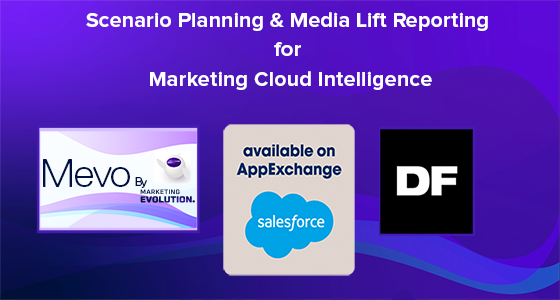How to Measure Offline Marketing ROI
Learn how Regions Bank Perfected their customer journey
Marketers understand the need for insights across their marketing mix that can help them better optimize their efforts and measure marketing impact. While digital efforts offer a variety of marketing metrics that can be analyzed to adjust marketing spend, measuring offline ROI is markedly more challenging and equally necessary. For marketers today, focusing solely on digital success metrics is only a part of the equation. Modern marketing is complex and in order to truly understand where revenue is being driven, marketers need insights that provide a full picture of the omnichannel advertising that consumers engage with.
The goal of offline attribution is to measure the ROI of a marketing channel's ability to drive sales. Today, marketers are leveraging outdated techniques that can’t provide the level of quality insights needed to understand offline media’s role in driving marketing ROI. All too often, marketers rely on models that provide high-level insights like time-limited attribution, vanity URLs, or surveys.
These methods leave much of the offline ROI attribution process to the assumptions of the individual marketer. The lack of specific, actionable insights developed using these methods has marketers questioning whether or not they can effectively measure their offline ROI.
Fortunately, marketers can gain insights down to the person-level on the impact their offline marketing efforts have in driving ROI and affecting their campaigns. To better understand how marketers can truly measure the impact of their offline ROI, it’s important to understand common measurement challenges, as well as the capabilities needed to effectively overcome these challenges.
Why is it Challenging to Track Offline Attribution?
Today, marketing efforts are multifaceted and fragmented, reflecting the complex consumer journey that spans various channels and touchpoints. As a result, marketers have to manage their efforts across a wider media mix with increasingly personal consumer insights. Properly measuring ROI in a fragmented landscape can be difficult, especially when marketers are leveraging offline media in combination with digital marketing efforts.
When it comes to measuring offline media attribution, marketers often spend their efforts focusing on individual channels. Whether it’s TV, radio, or print, most efforts are being made through channel-specific insights, i.e. which channel are marketers seeing have the biggest effect toward overall sales.
While this form of offline ROI measurement does provide some valuable insights, today, it’s no longer enough. Throughout the customer journey, consumers are influenced by a variety of touchpoints that they may never “physically” engage with—seeing a television ad then purchasing online for example. Today’s customer journey takes place across various offline and online touchpoints, so marketers need tools to recognize the efforts of their cross-channel marketing plans.
To accurately measure the impact of offline marketing impact, today’s metrics need to focus on much more comprehensive, person-level data. By understanding the consumer trends at the individual level, offline media optimization can be made easier since marketers can gain better visibility into exactly where, when, and why their offline media is effective. However, this requires large-scale data collection, which can be hard to properly gather. Furthermore, the big data collected then needs to be organized in a way that aligns with the marketing mix being used for a given campaign.
Integrating Online and Offline Data for ROI Measurement
To properly measure and attribute offline media, marketers must integrate their online and offline data. In doing so, they can efficiently and effectively transition from channel-level insights, to the person-level, highlighting users’ behaviors in relation to their offline media consumption and engagement.
Before ROI can be accurately measured, it’s crucial that marketers have access to the right data. Today, the average consumer is exposed to up to 10,000 brand messages a day. For marketers, having the right data means knowing which ads were seen, and how consumers are engaging with them—at which time and across what channel. This information provides the insights into the customer journey that are crucial to media mix optimization efforts.
When it comes to offline advertising measurement, marketers need a variety of data from multiple sources. Given the inconsistency of collecting data between TV, radio, print, mobile, and digital, marketers must be able to collect insights from all of the channels across their media mix. They can then organize the data to properly fit into a unified marketing measurement model that can efficiently determine ROI of every marketing dollar spent within specific audiences.
Marketers then need to adopt the right measurement model that can accurately integrate online advertising to online or offline sales and vice versa. Otherwise known as omnichannel measurement, this approach intakes data from disparate locations, and values offline media contributions together with online media. The result is an accurate view into the ROI and optimization opportunities offered by channels across the marketing mix—traditional and digital.
How to Measure Offline ROI Measurement with Integrated Marketing Technology
Today, consumer trends shift at such a rapid pace that traditional offline attribution measurement techniques—many of which don’t provide timely enough information to make actionable decisions—simply can’t keep up. For effective offline ROI measurement that can provide insights quickly enough to meet consumer needs, marketers require analytics software that can collect large amounts of data from across the media mix, then distill and organize that data into actionable insights. Therein lies the problem for most marketers looking to properly attribute their offline marketing efforts; few if any, have the capability to properly collect and normalize these insights across channels.
To help marketers effectively measure their offline ROI at the person-level, Marketing Evolution’s data analytics platform, the ROI BrainTM, gathers comprehensive data from across the marketing landscape for actionable, in-campaign analytics for online and offline performance.
Benefits of Integrated Data for Offline Attribution
Working with industry-leading partners, Marketing Evolution helps marketers combine big data and marketing analytics for transparent, unified ROI measurement and offline attribution across the entire marketing mix. Marketers can use these insights to pinpoint the offline media that has a direct influence on promoting campaign success, and properly attribute values accordingly using unified, omnichannel modeling.
Here are 3 benefits of integrating online and offline data:
Map a Customer’s Entire Journey
An integrated marketing technology solution can bridge the gaps across the customer journey, enabling marketers to have a holistic view of their customers and audience. With the ability to view a customer’s engagement at every touchpoint from start to finish, marketers can create a more personalized experience.
Optimize Campaigns and Ad Spend
Marketers can use these insights to pinpoint the offline media that has a direct influence on promoting campaign success, and properly attribute values accordingly using a unified marketing measurement. (With an understanding of what is and isn’t working, marketers can focus their campaign and budget on the channels that drive the highest ROI.)
Avoid Messaging Fatigue
Rather than sharing the same advertisement or message across all channels, marketers can tailor the messaging and play to the wants, needs, and expectations of the customer on each specific marketing channel.
Final Thoughts
Today’s complex marketing landscape means that marketing efforts are spread out across a rapidly changing, and far reaching media mix. In order to accurately measure ROI for offline media, and its impact within the marketing mix and overall sales, marketers need the ability to collect a variety of data, both online and offline, and then integrate that data into consumer trends that are on the person-level. From there, they can gain insights into the behaviors of those person-level groups and determine offline marketing attribution and ROI accordingly.
For the best results, it’s important that marketers leverage a marketing performance tool capable of not only accessing the data needed, but also aligning it for a view into marketing behavior that reflects accurate offline marketing ROI.




















